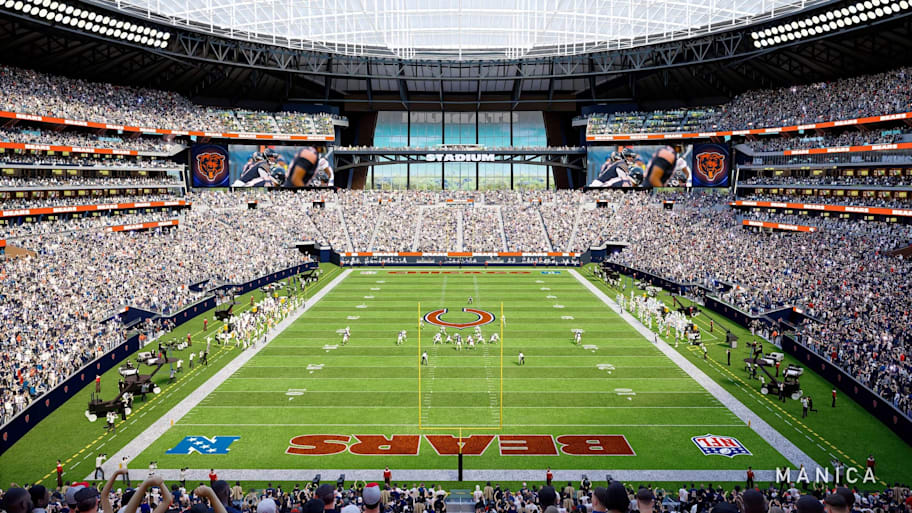Jerry Jones has made billions from turning the iconic Dallas Cowboys brand into vivid experiences. Even a simple phone call with Jones can be quite the experience, from the courteous receptionists (yes, plural) providing timely updates, to the Cowboys’ theme song that plays before Jones says hello.
“Sorry for being a little late,” says the recognizable voice of the boisterous 83-year-old Cowboys owner.
There was no need for Jones to apologize. It was the day after an emotional 40–40 tie between the Cowboys and Packers at Jerry World, also known as AT&T Stadium in Arlington, Texas. The Week 4 meeting gained notoriety because it was Micah Parsons’s first game against the Cowboys, a month after Jones made the shocking decision to trade the star edge rusher to Green Bay.
The Cowboys didn’t win, but there were a handful of victories off the field for Jones. For him, it’s always been about maximizing attention and rave reviews. And more than 26 million viewers tuned in to watch the dramatic stalemate during Sunday Night Football on NBC.
With that much attention for Parsons’s return, it was another grand opportunity for the TV broadcast to do the talking for Jones, enticing football fans to experience a Cowboys home game. It’s easy to forget that it’s now been more than 15 years since AT&T Stadium opened because of how often analysts still boast about the palace Jones built for his team.
“I would invite you to come,” Jones says. “When [everyone] left that stadium last night, it didn’t look like there had been anybody in it yesterday. Immediately, you could eat off the floor down on the event level.
“[Having AT&T Stadium]is a way to take all of the great media that we have associated with sports, and of course, the NFL leads that visibility. It’s a way to take that and maximize it and get more value and a year’s worth of visibility and perception than it’ll cost to build a whole stadium.”
The price of new stadiums has skyrocketed since AT&T Stadium opened in 2009. Jerry World cost about $1.2 billion to construct, with the city of Arlington funding about $325 million, a debt that was recently paid off 10 years early. SoFi Stadium, the home of the Rams and Chargers in Inglewood, Calif., is the most expensive sports stadium ever built, costing more than $5 billion before opening in 2020. It is also one of only three NFL stadiums built without public funding, along with MetLife Stadium and Gillette Stadium.
Jones’s stadium has become a destination, hosting events ranging from Super Bowl XLV to the Final Four to the upcoming 2026 World Cup. SoFi Stadium hosted Super Bowl LVI and will host Super Bowl LXI, as well as the swimming events at the 2028 Los Angeles Olympics.
Soon, many teams will follow Jones’s blueprint of building massive, modern, domed stadiums with mini football towns outside the city limits they technically call home. Bigger is better in Texas, but finding sizable land and funding can be challenging. That’s where the suburbs surrounding the NFL’s 30 markets come in, many of which are eager to gain the benefits that Jones speaks of about housing an NFL franchise.
Currently, the Chicago Bears and Cleveland Browns have plans to build domed stadiums outside their cities’ limits. But the Washington Commanders are one of the rare teams doing the opposite, recently announcing plans to leave the suburbs and return to the familiar RFK site in the nation’s capital. The Bills and Titans will unveil new stadiums in the next two seasons, each next door to their current homes (the Titans in Nashville, the Bills in Buffalo’s nearby suburb, Orchard Park), and the Broncos are in the process of doing the same, with plans to build a mile away from their current stadium in Denver.
However, it’s not as simple as saying build it and the benefits will come. First, there needs to be money upfront—not just to build stadiums that cost over $2 billion. Land needs to be purchased and infrastructure costs need to be covered. Then, there are the headaches that come from getting many people outside the team to agree, including politicians, lawmakers, and, of course, taxpayers when they’re needed.
The Bears have said they plan to cover stadium costs for their proposed site in Arlington Heights, a suburb northwest of Chicago. But they’re seeking $855 million in public funding for infrastructure and hoping state lawmakers pass bills that would freeze the team’s tax breaks and give them additional flexibility to start building later this year. So far, Illinois and Chicago lawmakers have opposed supporting any measure that would green-light the Bears’ plans to leave the city.
“With the premier asset that you have,” Jones says, “with a hook into the greatest viewership the world’s ever seen—and that’s the NFL viewership—you really can’t afford to let some of those issues between the city of Chicago and a suburb of Chicago [get in the way]. The world has to adjust as the practical aspects of it move along, and that’s why you’re seeing it. The world has adjusted. It fits financially. It can work.
“Maybe Chicago itself—or in our case, Dallas itself—didn’t have the viable resources in their minds. But look what they [Arlington and Dallas] have [with AT&T Stadium], and they have a great venue that last night could very easily approach 40 million people [with the Cowboys playing the Packers].”
While there are many benefits to having a new NFL stadium, this is just a glimpse of how complex it can be to get stadium plans off the ground. However, there are various ways to overcome the obstacles. From two different viewpoints, here’s why the Bears are determined to move forward with their stadium suburb plans and why the Commanders went all in to return to the city after a quarter-century of playing in Maryland.
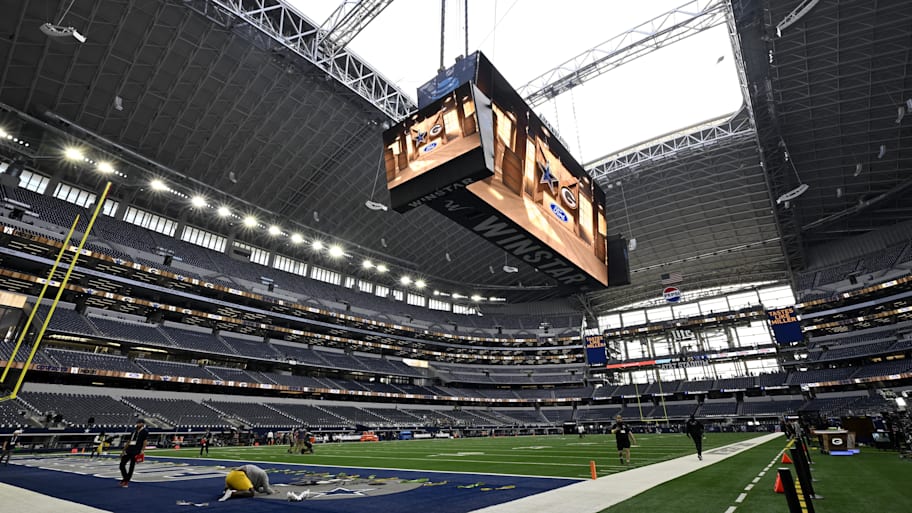
Bears push for suburban life
In a statement sent to Sports Illustrated, the Bears said the Arlington Heights site is the only viable option for keeping the team within Cook County, which is also the home of Chicago.
“We look forward to building a world-class, enclosed stadium that Chicago Bears fans deserve and a surrounding entertainment district in Arlington Heights,” the team’s statement read. “The Arlington Park site is the only location within Cook County that is feasible. This project would be an economic boost for the state, creating more than 56,000 construction job years [year-long construction jobs]; 9,000 permanent jobs; and generating millions in new annual tax revenue for the state, county, and village. It will also restore the state to the global sports stage, providing a venue suitable for the Super Bowl, the Final Four, College Football Playoff games, concerts and other marquee sports and entertainment events.
“Our overall commitment to the city of Chicago, and its people, will never change. We will ensure that Chicago businesses and workforce are part of the building of this transformative project. We have spent $41 million on community programs in Chicago since 2011, and we will continue to grow our programs that serve the people in the city of Chicago.”
Marc Ganis, a sports consultant who has helped with developmental plans for more than a dozen major venues, agrees that the Bears have no other choice but to leave the city because Chicago hasn’t offered any alternatives. There’s also the issue of building around the city’s lakefront protection laws if the Bears were to stay near their current home Soldier Field, where the team has played since 1971. The stadium originally opened in 1924 and underwent significant renovations from 2002 to ’03.
“Some of the political leaders that have been vocal about this seem to have an odd approach to it,” Ganis says. “They seem to think that not offering any other site is somehow acceptable and that the Bears somehow must stay within the city limits. If the political leadership of the city and some of the political leaders in the state want to keep the Bears within the city limits, it is incumbent on them to present sites and a proposal, but they’ve done neither.”
Ganis listed reasons why the Arlington Heights location is excellent for the Bears, primarily because of the sizable 300 acres that were designed to handle crowds of 60,000-plus people when the site used to be a racetrack.
“If a heat map was drawn of Bears season ticket holders, it’s in a very advantageous location,” Ganis says. “It has a lot of infrastructure, highways and rail that go right adjacent to the site. … It is close to O’Hare Airport. There is sufficient land to be able to build real estate development to help offset some of the costs associated with the private development and operation of the stadium.
“They also have enough land to build a lot of parking, so that the fans can tailgate before games. And from the standpoint of Cook County, it’s excellent because it’s within Cook County, which Chicago is in. So Cook County will continue to receive all of the taxes that they received from Bears games.”
Illinois state representative Kam Buckner, who represents the district where Soldier Field is located, isn’t disputing the benefits the Bears would receive from moving to Arlington Heights. He would rather see the Bears stay in Chicago, but with the team being a private entity, he understands that they have the right to do what’s best for them. But Buckner has issues with the team seeking public money and has been vocal about the team attempting to leave behind outstanding debt from the Soldier Field renovations. According to Bloomberg, $356 million of debt remains from the stadium makeover.
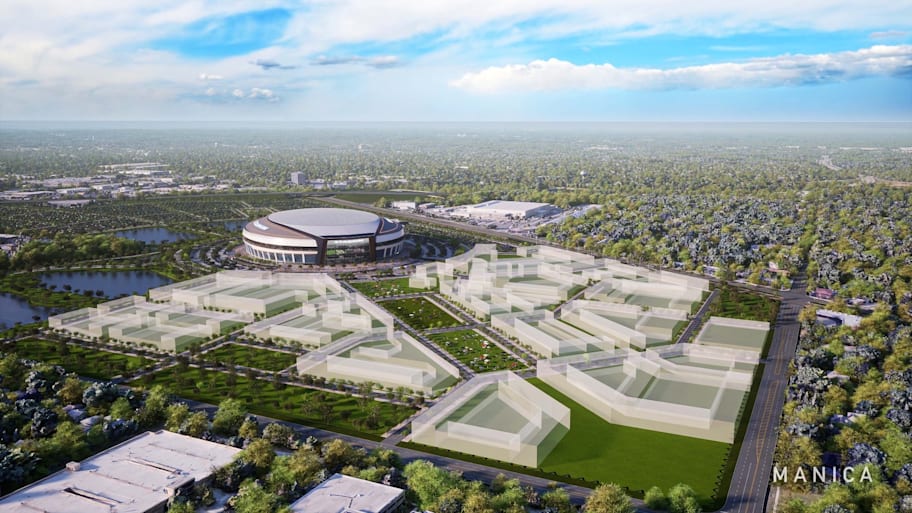
“People in roles like mine have to be smart and prudent with people’s money,” Buckner says. “We can’t just give blank checks to folks, but that seems to be what some of these folks want to happen. I’m hoping that we can find a way to create some middle ground here and figure out a way to move forward without [public funding].
“And just to put things into context real quick, I think, for the Bears to ask the people of Illinois for a billion dollars in infrastructure, plus a property tax freeze, which will pull money that’s supposed to go to police, fire and schools. At the same time, as a state, we have just asked all of our state agencies to cut their budgets about 4%, because of what’s going on in Washington D.C., it’s creating a less than stable budget for the state of Illinois. And people around the state want their own property tax certainty. They want their own help from the government. For them not to be able to get that, but for the Bears to cut the line and get theirs, would be problematic.”
Buckner said he and his colleagues aren’t willing to entertain the bill that would provide the Bears with tax certainty, at least not this month. Instead, Buckner introduced legislation earlier this month that would push for greater transparency around stadium deals in Illinois that could also require teams to cover more of the costs. In turn, this legislation could hinder the Bears’ plans to put shovels in the ground in Arlington Heights later this year.
“For them to be in the ground by the end of the year, the bill will have to pass by Oct. 29, and with so many questions still out there about whether or not this makes financial sense for the state of Illinois, I don’t see that happening,” Buckner says.
“I’ve asked for the ownership, not [Bears president] Kevin Warren and not his team, but I’ve asked for the ownership of the Bears, [the] McCaskey family, to come to [state capital] Springfield and have a conversation with legislators in public, on the record, about what it is that they’re seeking and what the economic benefit is for the people of Illinois. They have not responded to that yet.”
One obstacle for the Bears that’s less political in nature would be getting the majority of their fan base on board with these drastic changes. The team is aiming to leave a historic venue known for fielding tough teams accustomed to the treacherous weather conditions that come from playing outdoors in the cold months next to Lake Michigan.
“I do not believe they should build a domed stadium,” Ganis says. “Chicago Bears fans pride themselves on being fans in what they call Bears weather. They like that reputation.”
On the other hand, a domed stadium would create more opportunities for drawing the Super Bowl and other major sporting events.
As for preserving team history, Raiders president Sandra Douglass Morgan, whose team left Oakland for a $1.9 billion stadium in Las Vegas in 2020, says there are ways to honor the team’s past and reputation while also embracing the changes that come from a modern covered stadium. Allegiant Stadium was partially funded by $750 million in public bonds.
“You have people initially that may be resistant to change and don’t want to come for various reasons,” Douglass Morgan says. “But once they’re there, they know that the love at the end of the day is for that team. And even though it may be in a new or different environment, once they get there, I’m sure that any team is going to do a great job of making sure they’re keeping as many of their fans happy as an enterprise as possible.
“Not being from Oakland, me, I’m from Las Vegas, and meeting so many people—and it’s not just from my first year, it’s been throughout—they said, ‘You know what, I never made the trip out here to Vegas. I’m glad I did. You know, I’m all in.’ That’s going to take the work of the team to do that. But there’s no doubt in my mind that they will.”
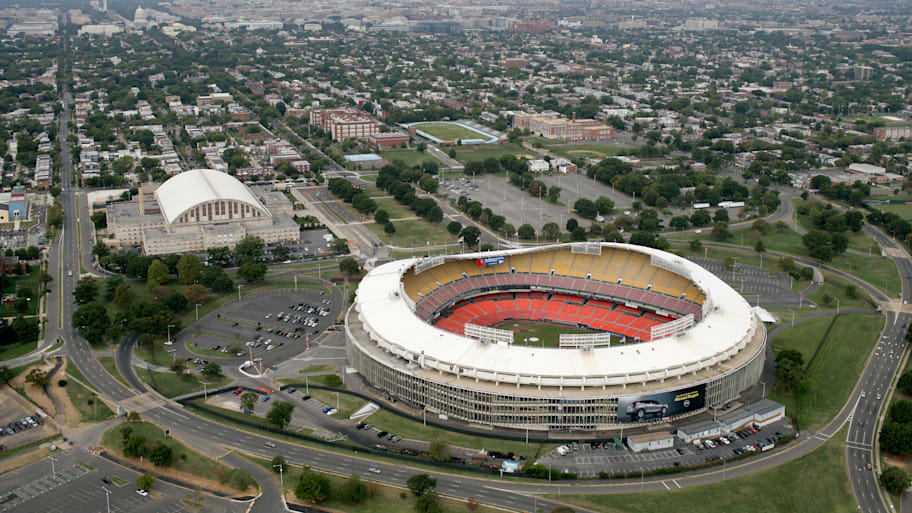
Commanders’ long-awaited return to D.C.
Washington D.C. Mayor Muriel Bowser faced a unique challenge while negotiating the deal that returned the Commanders to the city after playing home games in Landover, Md., for the past 28 years.
After pushing for 10 years, Bowser achieved her goal of having the land that includes the old RFK Stadium transferred from the federal government to city control. She cleared the final hurdle last month when D.C.’s city council approved the Commanders’ return to the RFK site, where the team played when it won three Super Bowls in the ’80s and early ’90s.
“It’s the culmination of a lot of work, fits and starts, ups and downs, starts and stops, you name it,” Bowser says. “We’ve been through it, but we got control of 180 acres of land, which is what I promised. We are making it a mixed-use development, which is what I promised, including an NFL stadium. And we have the right partner who’s bringing $2.7 billion to the deal. So we have our North Star now to get it open in 2030.”
The Commanders committed to paying 100% of stadium costs, while D.C. prepares the land and pays about $500 million in infrastructure for the stadium and campus investments. About 24% of stadium and parking development costs will come from public investment, with no new taxes, no cuts to services and no delays to other infrastructure projects, according to a spokesperson representing Bowser.
“When you talk about investing in these stadiums and using public money, you have to rightfully make a pitch to your taxpayers to say that it’s worth it,” Bowser says. “Because there are opportunity costs and we have to demonstrate the economic benefit, and this also fits into our larger strategy as a city.
“Our economy is shifting. We have been really based on federal workers and tourism. As our federal workforce base diminishes, we have to lean even more heavily to our entertainment and tourism, and sports in our arenas have done very well here. We know that this is an investment; it’s not a giveaway, and it is going to pay off for years to come.”
Bowser said there was plenty of persistence in getting lawmakers and the team on the same page, but it was a significant boost when Josh Harris purchased the Commanders from Dan Snyder in 2023.
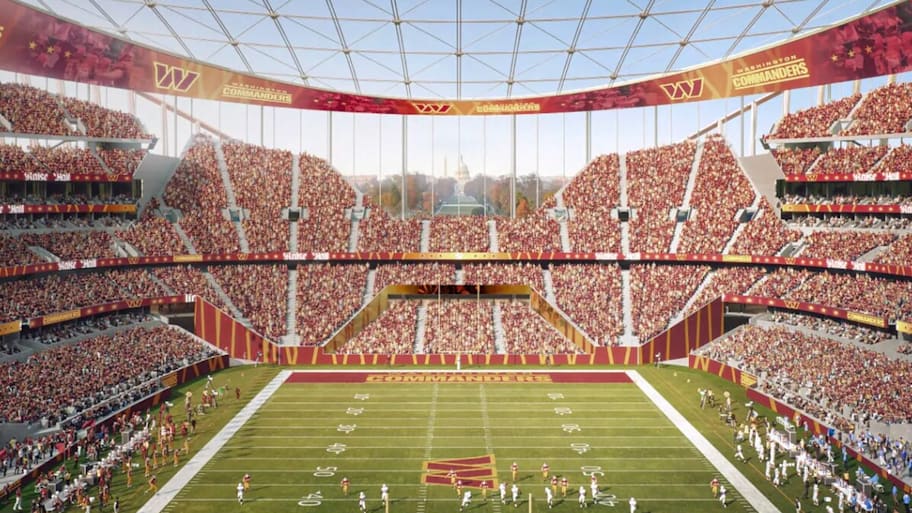
“I think it’s like night and day,” Bowser says of the two ownership groups. “You had a troubled organization, and now you have an ownership group that’s committed to the city and seems more focused on the business aspects of running an NFL franchise. I think they’re going to be very successful.”
Bowser is hoping what D.C. and the Commanders achieved in their agreement to build a new stadium in the city could entice more teams to lean away from the trend of moving to the suburbs. It’s also not a given that suburban residents want a football team as neighbors.
“They don’t necessarily want to bring the city to their backyard,” Bowser says. “They want to be able to go out to the city and go to a game and go to a restaurant and take public transit to get there without the hassle of sitting on the Beltway and finding parking spaces.”
Still, it isn’t easy to know what suburban and city residents truly want. NFL teams are putting taxpayers in a difficult position, forcing them to decide whether the long-term benefits of a new stadium outweigh the present burdens.
“There is not a fraction of confusion or a fraction of debate. That when you have the Chicago Bears, and I don’t care if they’re sitting in a suburb, there’s not a fraction of distraction that it represents the Chicago area, just like the Dallas Cowboys [represent Dallas].”Jerry Jones
Many people, like Buckner, disagree with how the Bears are planning to build their state-of-the-art stadium. He added: “Even though that’s the trend for folks to leave, I don’t think the Bears have to embrace that trend. We’ve always done things differently in this city.”
Chicago is one of the rare cities with all its major sports teams playing within its city limits. It appears that this will no longer be the case with the team’s plans to move to Arlington Heights. Washington, D.C., will eventually house all of its major sports teams when the Commanders leave the suburbs in 2030.
Either way, Jones believes cities and suburbs will benefit from a new stadium, regardless of the location.
“There is not a fraction of confusion or a fraction of debate,” Jones says. “That when you have the Chicago Bears, and I don’t care if they’re sitting in a suburb, there’s not a fraction of distraction that it represents the Chicago area, just like the Dallas Cowboys [represent Dallas].
“And if you ask millions of people in this country, with my stadium, the market area of Dallas receives the benefit of perception on our stadium, it’s the same thing in Chicago.”
This article was originally published on www.si.com as Bears and Commanders State Their Cases for Suburban and Urban Stadiums.

